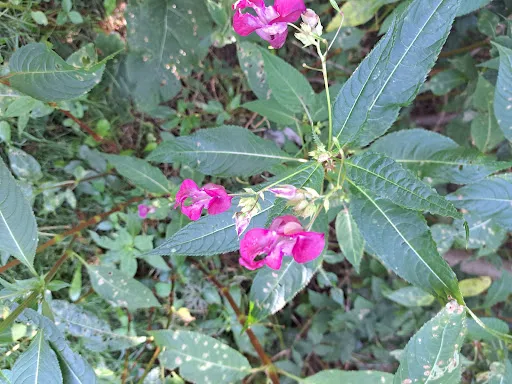The root bark are used for inhibiting the proliferation of lung cancer. The root bark is used by the Chinese as an anti-fungal remedy. It is also said to calm the nerves. Tea: use 1 teaspoon flowers or leaf (for a stronger tea use 2 teaspoons) per cup of tea (about 8 ounces).
Rose of Sharon are beautiful and tasty members of the mallow family. I believe this one is Hibiscus syriacus. The flowers, flower buds, leaves, and young seedpods are all edible raw or cooked.
A sticky resin like substance on bark and leaves of Cistus, called labdanum, has been used since ancient times and is spoken of in the Song of Solomon in the Bible.
Great detail is there about how the Orientals have used this plant for long time. In moderation it may serve many uses including gentle demulcent benefits for irritated or inflamed gut. The flowers may be used externally as an emollient and internally in GI tract support. It reduces BP, is hypotensive and mildly diuretic, according to the Encyclopedia of Natural Medicine.
Medicinally, rose of Sharon’s flower buds contain mucilage, a gooey medicinal compound made of polysaccharides, found in most species of the mallow family; think of okra’s sliminess. Mucilage can be used to heal burns, wounds, gastric ulcers and internal and external inflammation and irritation, such as sore throats or urinary tract infections.”



